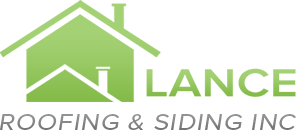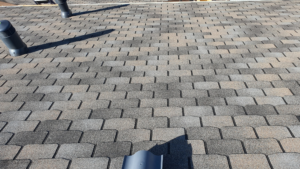Shingles help protect your home from the elements, but what can you do when your shingles start to wear down, and your roof develops mold? Here are some tips on how to identify mold and keep your roof safe from it.
How to Tell if Your Roof has Mold
When you look up at your roof, you may see green. That doesn’t necessarily mean that it is mold. It is common for algae, moss, and mildew to develop on a roof as well as mold. A simple way to tell the differences is these traits:
- Algae: greenish-black color, slick and slimy to the touch
- Moss: bright green color, fuzzy to the touch
- Mildew: light gray-green color, powdery to the touch
- Mold: dark color, rancid smell, commonly grows on moist materials
How to Prevent Mold from Growing on Your Roof
Perform Regular Inspections
Check your roof at least twice a year—once in the fall and again in the spring. In addition to removing leaves and debris during these inspections, look for cracked, curling, damaged, and broken shingles. If you spot any of these problems, contact a professional roofer right away to get them repaired.
Replace Old Shingles Regularly
Old shingles tend to wear down over time and become more prone to developing mold. It’s essential to keep an eye out for signs of water damage or leaking around exposed nails and flashing, as this could indicate that you need to replace the broken or damaged shingles with new ones. Consider replacing all old shingles once every 5-7 years, even if they don’t show any visible signs of damage.
Keep Leaves Away from Your Roof
It likely comes as no surprise that a pile of wet, dead leaves will mold. Leaves left near your roof can trap moisture against your shingles, leading to mold growth and erosion. To help protect your roof from erosion due to excess weight, make sure you keep leaves off it by raking them away during your inspections. You may even want to consider installing gutter guards that will help keep large amounts of leaves away from your gutters and protect them from clogging up with debris.
Install Ice & Water Shields on Your Roof
Mold likes wet areas. Ice and water shields provide an extra layer of protection against ice dams formed by melting snow on your roof that can cause permanent damage if not resolved quickly enough. To ensure proper installation is made, get a professional contractor experienced with these types of installations who specializes in low-slope roofs.
Maintain Proper Ventilation in Your Attic or Crawl Space
Hot air rises from within your house and builds in the attic or crawl space without proper ventilation—which can lead to condensation building up on existing shingles, creating problems like wood rot and mold. To effectively control temperature swings throughout the year, install vents near eaves or install a dehumidifier in places like attics or crawl spaces where hot air tends to accumulate more easily without proper airflow.
Lance Roofing – Your Trusted Team for Roofing
Whether you need a roof inspection, a roof repair, or a new roof installation, Lance Roofing is your local team ready to provide premier services. Learn more today!


